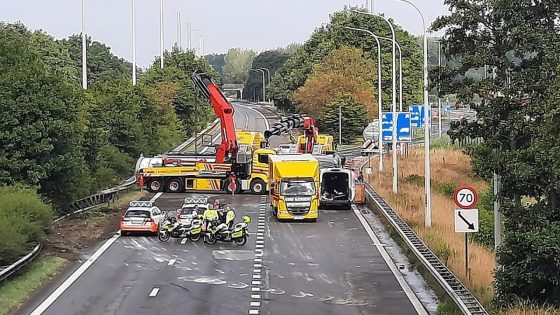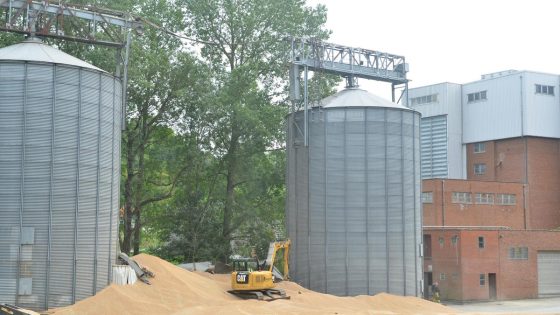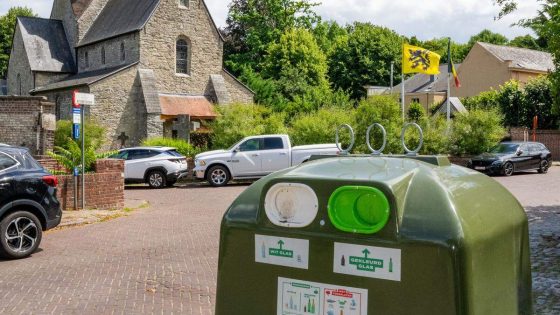A tank truck accident blocked the E313 near Diepenbeek early on Friday morning, causing significant disruption to local traffic. The incident, which occurred around 5:30 am, involved a German tractor with a Belgian trailer that overturned, spilling calcium carbonate on the highway. By 2025-08-01 17:59:00, emergency services had managed to clear the scene and restore traffic flow.
- Hamse sleepdienst trok vrachtwagen recht rond 10 uur
- Tankwagen bevatte calciumcarbonaat, niet gevaarlijke stoffen
- Tankwagen lag dwars over snelweg E313
- Verkeer omgeleid via uitrit 30 Diepenbeek
- Brandweer bevrijdde bestuurder met nekletsel
- Chauffeur Duitse man, toestand niet zorgwekkend
The overturned tank truck lay across the highway, forcing vehicles to detour via exit 30 Diepenbeek. Fortunately, the contents were non-hazardous, and the rescue team safely extracted the driver, who sustained neck injuries but was later reported to be in stable condition. This incident highlights the challenges of managing traffic incidents on busy Belgian motorways.
How did the emergency teams handle the complex recovery, and what lessons can be drawn for future highway safety? The following Fast Answer provides a concise summary of the event’s impact on Belgian traffic and safety protocols.
What made this incident manageable despite the potential hazards? The response showcased effective coordination and safety measures:
- The non-dangerous cargo reduced environmental risks and allowed quicker recovery.
- Emergency services promptly activated a detour, minimizing traffic jams during the summer break.
- The driver was rescued carefully, emphasizing the importance of timely medical intervention.
- Specialised towing services successfully uprighted the tank without causing leaks.
Looking ahead, Belgian authorities and transport companies should continue refining emergency response protocols to ensure swift, safe clearance of accidents. Are our current infrastructure and services prepared for more complex incidents? Ongoing evaluation and investment will be crucial to keep Belgium’s roads safe and efficient.
































